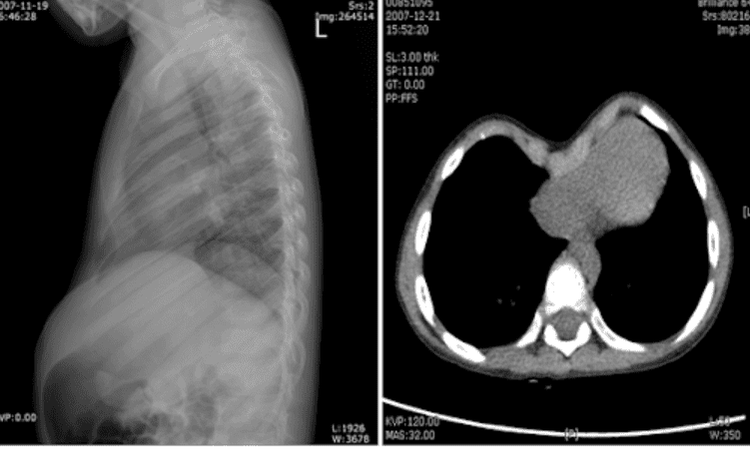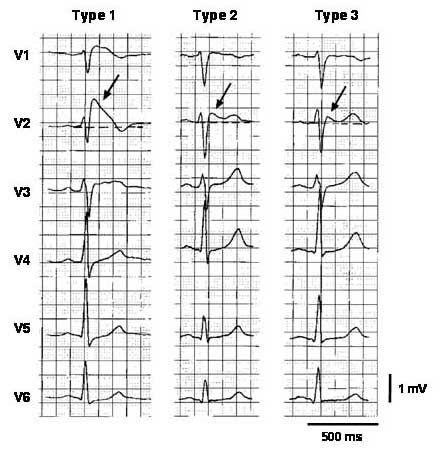This is an automatically translated article.
The article was professionally consulted by Specialist Doctor II Tran Van Trong - Specialist in Pediatric Surgery, Plastic Surgery - Aesthetics - Department of General Surgery - Vinmec Danang International Hospital.Congenital dimples can often be easily diagnosed by examining the chest. But your doctor may order several other types of diagnostic techniques to check for problems with the heart and lungs.
1. Diagnosis of congenital chest concave
Congenital hollow chest in children (English name is Pectus excavatum), also known as funnel chest, is a condition in which the breastbone and some ribs are abnormally deformed and deeply concave. Dimples in the chest in infants can be difficult to detect when the symptoms of depression begin to become apparent when the child is 2 to 3 years old. In some cases, new chest depressions appear as the child gets older.Chest depression can often be easily diagnosed by examining the chest. But your doctor may order several other types of diagnostic techniques to check for problems with the heart and lungs, including:
Chest X-ray : This lets the doctor see the shape of the bones How the breast is concave and check to see if the child's heart is pushed to the left. X-rays are painless and only take a few minutes to complete. Computed tomography (CT) scan: A CT scan is used to help determine the severity of chest depression and whether the heart or lungs are compressed. Because a CT scan takes many X-rays from different angles to create cross-sectional images of structures inside the body, your doctor can identify these problems. Chest CT is essential because it provides the Haller index. The Haller index is the ratio between the transverse thoracic diameter and the anteroposterior diameter of the chest. Normally, this index is about 2.5 cm and if it is above 3.2 cm, this child is defined as having severe chest depression.

2. Chest depression and how to treat it
Chest cavity can be surgically corrected, but surgery is usually reserved for children with moderate to severe signs and symptoms. People with mild signs and symptoms can be treated with physical therapy techniques and certain exercises that can improve posture and increase the extent to which the chest can expand.Types of surgery
If your child has moderate to severe thoracic outlet surgery, the doctor may recommend surgery with the two most common types of surgery used to treat thoracic cavity depending on the size of the incision and whether whether cartilage is removed:
Smaller incision: This is minimally invasive surgery with small incisions made on each side of the chest, under each arm. Small surgical instruments and cameras are inserted into the body through the incisions. A curved metal rod is inserted under the concave sternum and used to raise the sternum to its normal position. In some cases, children need to use more metal bars. After two or three years the bars are drawn. This surgical method is called the Nuss Surgery.

Dr. Trong has over 10 years of experience in Pediatric Surgery and Plastic Surgery - Aesthetic, and soon became one of the leading doctors in the field of Children's Surgery, especially Laparoscopic Surgery. and Plastic Surgery - Aesthetic.
Pediatrics Department at Vinmec is one of the few multi-specialty hospitals with a full range of doctors specializing in neurology, cardiology, gastroenterology, nutrition, psychology, endocrinology, hepatology, helping to handle it quickly and in a timely manner. when diseases are discovered during the examination. As a key area of Vinmec Medical system, Pediatrics Department always brings satisfaction to customers and is highly appreciated by industry experts with:
Gathering a team of leading pediatricians: including leading experts with high professional qualifications (professors, associate professors, doctorates, masters), experienced, worked at major hospitals such as Bach Mai, 108.. Doctors All are well-trained, professional, with a mind - range, understanding young psychology. In addition to domestic pediatric specialists, the Department of Pediatrics also has the participation of foreign experts (Japan, Singapore, Australia, USA) who are always pioneers in applying the latest and most effective treatment regimens. . Comprehensive services: In the field of Pediatrics, Vinmec provides a series of continuous medical examination and treatment services from Newborn to Pediatric and Vaccine,... according to international standards to help parents take care of their baby's health from birth to childhood. from birth to adulthood Specialized techniques: Vinmec has successfully deployed many specialized techniques to make the treatment of difficult diseases in Pediatrics more effective: neurosurgery - skull surgery, stem cell transplantation. blood in cancer treatment. Professional care: In addition to understanding children's psychology, Vinmec also pays special attention to the children's play space, helping them to have fun and get used to the hospital's environment, cooperate in treatment, improve the efficiency of medical treatment.
Please dial HOTLINE for more information or register for an appointment HERE. Download MyVinmec app to make appointments faster and to manage your bookings easily.
Recommended video:
Fetal screening - A healthy baby is born














